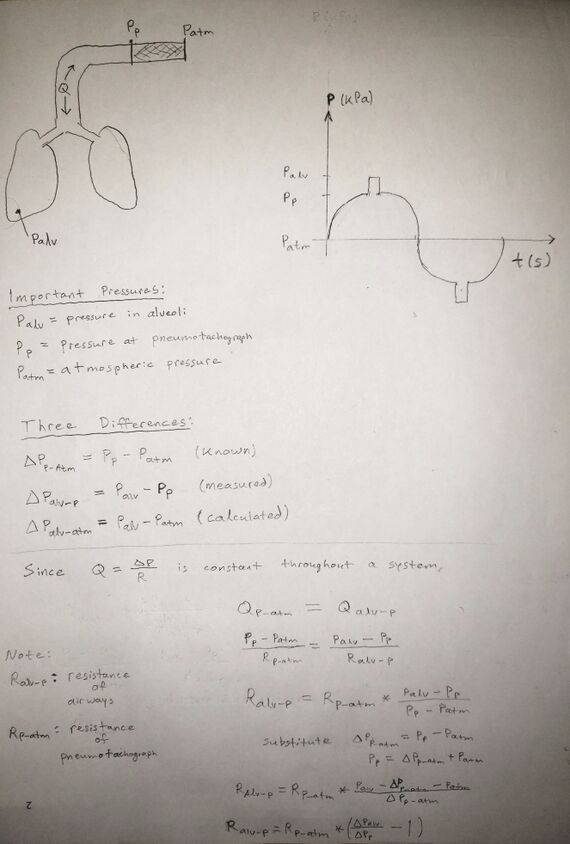Airway resistance and its measurement
Principle[edit | edit source]
Airflow between the nose/mouth and the alveoli is driven by a pressure difference. The airways in between form a resistance
R=ΔP/Q
where R is resistance, ΔP is the pressure gradient and Q is airflow
Resistance itself is described by the Poiseuille law
R = 8ηl/(πr4) - use to explain why during exhalation there is more resistance, because we take all the alveoli all together, compare with their radius and the tracheal radius
Where η is the viscosity of the inspired gas, l and r are the length and radius of the airway
Evidently, contraction of bronchi results in decreased airflow.
Measurement[edit | edit source]
Airway resistance is measured via pneumotachography (pneumo=lung, tacho=fast, graph=write), which compares pressure differences at two ends of a tube through which the subject breathes. Since the airflow Q is the same everywhere, one can derive an equation to find airway resistance:
Increased airway resistance indicates obstruction of the airways.
Links[edit | edit source]
References[edit | edit source]
Costanzo, L., 2019. Physiology - Board Review Series. 7th ed. Philadelphia: Wolters Kluwer, p.122.

